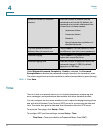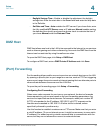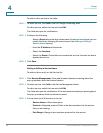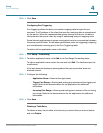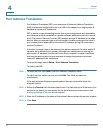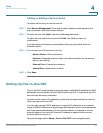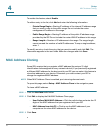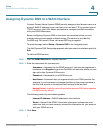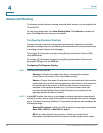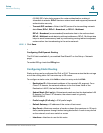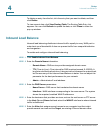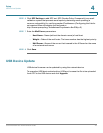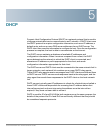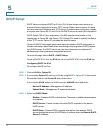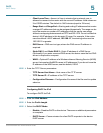
Setup
Advanced Routing
42 Cisco RV320/RV325 Administration Guide
4
Advanced Routing
This feature enables dynamic routing and adds static routes to the routing table for
IPv4 and IPv6.
To view the routing table, click View Routing Table. Click Refresh to update the
data. Click Close to close the pop-up window.
Configuring Dynamic Routing
Dynamic routing constructs routing tables automatically, based on information
carried by routing protocols, and allowing the network to act nearly autonomously
in avoiding network failures and blockages.
To configure IPv4 dynamic routing by using Routing Information Protocol (RIP),
click the IPv4 tab.
To configure IPv6 dynamic routing by using Routing Information Protocol next
generation (RIPng), click the IPv6 tab.
Configuring IPv4 Dynamic Routing
STEP 1 Choose the Working Mode:
• Gateway—Choose this mode if this device is hosting the network
connection to the Internet. This is the default setting.
• Router—Choose this mode if the device is on a network with other routers
and another device is the network gateway to the Internet or this network is
not connected to the Internet. In Router mode, Internet connectivity is
available to the network devices only if you have another router that
functions as the Gateway. Since firewall protection is provided by the
gateway, disable this device firewall.
STEP 2 Enable RIP to allow this device to exchange its routing information automatically
with other routers, and to dynamically adjust its routing tables as network changes
occur. The default setting is Disabled. If you enable this feature, also configure the
following settings:
• Receive RIP versions—Select the RIP protocol for receiving network data:
None, RIPv1, RIPv2, or Both RIP v1 and v2.
RIPv1 is a class-based routing version. It does not include subnet
information and therefore does not support variable length subnet masks



